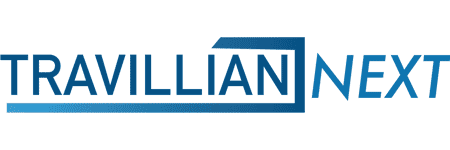Of the 133 out of 164 banks with greater than $5B in assets that have reported so far, 58% exceeded consensus expectations for 2Q20. Bank stocks have bumped around but are basically flat since early June and about half the industry trades at or below TBV. We came away with two positives and one negative from the quarter (see below).
Most of the discussions continue to be around deferred loan portfolios and how they are behaving. Besides NIM/spread revenue headwinds, loan deferrals are the major reason the stocks remain range bound. The magnitude of future asset quality deterioration remains speculative. We think a level of skepticism exists for the “cautious optimism” that some management teams have espoused. The HEALS Act will follow the CARES Act (to the detriment of our poor greenback), but aid eventually will have to taper. The resiliency of our populace and American businesses is impressive, but can the economy and stock market be sustained without such massive stimulus? There is palpable uncertainty, with COVID cases climbing rapidly and the reversion to service businesses operating at diminished capacity.
Deferrals are all over the place. There has been mixed commentary around loan deferrals. For example, we heard from some banks that experienced higher deferrals in hotel loans and cautioned about those credits coming off deferral soon. Others indicated a sizable portion has returned, or was returning, to performing status. Valley Bancorp (VLY) indicated roughly 96% of the hotels whose 90-day deferral periods have run out are back on regular payment schedules. Amazing!
We think three key takeaways emerged from earnings season:
|
#1. Credit Quality – Positive. When credit gets bad, regulators usually bring in their hammers, as not addressing credit in a timely manner usually serves to make things worse from a loan loss perspective (and for the FDIC Deposit Insurance Fund). This is a unique downturn: deferring loans may not be “kicking the can down the street”, as a vaccine or eventual full opening of the economy could change the credit characteristics of many loans. We get the strong sense that regulators are going to be quite relaxed from a policy perspective for more than year, which will give banks more time to build reserves, earn through credit losses, and not have large potential capital holes to fill. We feel better about credit quality not creating the capital problems investors are worried about, though there will still be sizable credit losses over the next two years.
|
|
#2. Lack of NII Growth Coming into Clear Focus – Negative. Even with the benefit of the PPP program, NII for the industry was slightly lower on a Y/Y basis. The prospects for loan growth are diminished, at best, as are NIM prospects in what appears to be a persistently low interest rate outlook. More NIM compression than expected is partially a function of the excess liquidity building on bank’s balance sheet, but deploying some portion of it is an unattractive use of capital at exceptionally low rates. The approach we frequently hear about is “controlling what you can control” (i.e. expenses.) However, banks that can defend their NIM better than others and grow credit without taking too much risk will be the big winners over the next year. Yes, banks are great at CRE and some are good C&I lenders, but being differentiated matters more than ever. Any bank can compete on “price” and book credits that fit in every bank’s lending criteria box, but specialized lines of business that are less susceptible to market rates will be key to defending NII/NIMs.
|
#3. Expense Discipline Coming into Better View – Positive. Besides a broad range of loan deferral patterns in the quarter, the other trend lacking a tight range was Y/Y and LQ comparisons for pre-tax, pre-provision revenue (or net interest income plus fee income minus expenses). Part of this is the product of another banner quarter for banks that have mortgage-banking operations, and lower expenses this year are partly due to less incentive compensation accruals and modest travel expenses. However, some banks are already adopting tighter expense control than we expected, even before the real work of shattering the old mold of branch networks begins in earnest.
The industry and the institutions within it need to create platforms that are cost-effective at underwriting loans, creating the best customer experience, and providing products and services with less real estate, overhead, and compliance risk. 2020 remains a great year for the “whiteboard”, so to speak, and there is a great opportunity at present for banks to take a restructuring charge to really reset the longer-term expense and efficiency outlook. Those that are taking these steps now will be the acquirers of the institutions that fail to recognize that the glacial pace of change in the financial industry is over.
One final thought: If the baseball season is possibly over less than two weeks after it started, it will serve as an indicator of how difficult reverting to normal may really be.
The Travillian Group’s Banks and Credit Unions practice provides Search and Talent Advisory (TTG|Align) services to depository institutions across the country. Established in 1998, the firm has built a unique platform that touches every corner of the industry.
Our search and advisory professionals focus on building long-term, trust-based relationships with Boards, Executives and HR professionals. They assist our clients in the hiring of high quality, hard to find talent and provide full-life cycle consulting in such areas as succession management, leadership development, employee engagement, recruitment strategies and compensation.








